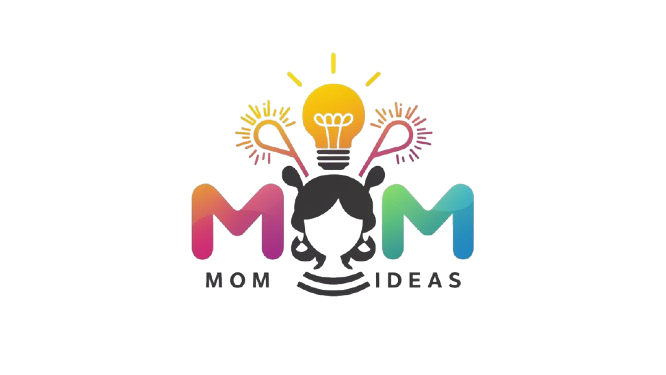Honey Bunches of Oats is a popular cereal brand known for its sweet taste and crunchy texture. It’s a go-to breakfast for many families. But is it actually healthy? To answer that, we need to look at the nutrition label. Let’s break down what each part of the label tells us.
Serving Size and Calories
The serving size is 1 cup (about 40 grams). That serving contains around 160 calories. Most people pour more than that—often 1.5 to 2 cups. That brings the calorie count closer to 240–320 calories per bowl.
If you’re watching your weight or calories, it’s important to measure your cereal. Using a measuring cup can help control portions and calories.
Fat Content
Honey Bunches of Oats is low in fat. A serving contains about 2 grams of total fat. Saturated fat is very low—only about 0.3 grams. It has no trans fats.
This low fat content is good for heart health. Most of the fat comes from oils like canola or sunflower. These are better fats compared to animal-based fats. However, low fat also means the cereal may not keep you full for long.
Sugar Content
One serving contains about 8 grams of sugar. That includes added sugars like white sugar, corn syrup, and honey. While honey sounds natural, it still counts as added sugar.
If you pour a large bowl, you could get 12–16 grams of sugar. That’s close to the daily limit for added sugar, especially for kids and women. High sugar intake can lead to weight gain, tooth decay, and blood sugar spikes.
Carbohydrates and Fiber
Each serving contains around 32 grams of carbohydrates. That’s a typical amount for breakfast cereal. However, fiber content is low—about 1.5 to 2 grams.
Dietary fiber helps with digestion, blood sugar control, and satiety. Healthier cereals usually have 4 to 7 grams of fiber per serving. Honey Bunches of Oats falls short here.
Because of its low fiber and high sugar, it digests quickly. You may feel hungry again soon after eating.
Protein
There are only about 2 to 3 grams of protein per serving. That’s very low, especially for a breakfast food. To feel full longer, meals should include 10–20 grams of protein.
You can boost the protein by pairing the cereal with milk, Greek yogurt, or nuts. Alone, this cereal won’t provide enough protein for most people’s needs.
Sodium
Honey Bunches of Oats has around 180 milligrams of sodium per serving. That’s roughly 8% of the recommended daily value. It’s not extremely high, but not low either.
If you’re watching your salt intake due to high blood pressure or heart disease, keep this number in mind. Add milk or other ingredients without added salt to balance it out.
Vitamins and Minerals
This cereal is fortified with vitamins and minerals. That means extra nutrients are added during production.
A serving contains high levels of:
-
Iron (up to 60–70% of the daily value)
-
Folic acid
-
Vitamin B6 and B12
-
Thiamin (B1), Riboflavin (B2), and Niacin (B3)
It also contains smaller amounts of:
-
Vitamin D
-
Zinc
-
Magnesium
-
Calcium
These nutrients are important, especially for people who don’t get enough from other foods. Fortified cereals can help fill nutrient gaps.
Whole Grains
Honey Bunches of Oats does include whole grains like whole grain wheat and oats. The box often highlights this. One serving may contain about 14 grams of whole grains.
That’s a good start. The daily recommendation is about 48 grams. You’ll need to eat other whole grain foods throughout the day to meet that goal.
However, this cereal also contains refined grains like corn and rice. These are digested quickly and don’t offer much fiber or nutrition.
Ingredients List
The ingredients include:
-
Whole grain wheat
-
Sugar
-
Whole grain oats
-
Corn
-
Rice
-
Canola oil
-
Corn syrup
-
Molasses
-
Salt
-
Honey
-
Barley malt extract
-
Artificial and natural flavors
-
Added vitamins and minerals
Sugar appears multiple times in different forms. That’s a red flag. The more times sugar shows up, the more total sugar the product has. Even though “honey” is in the name, it’s not the main sweetener.
There are also additives like BHT (a preservative) and artificial flavors. These aren’t harmful in small amounts but don’t add nutrition.
Taste vs. Nutrition
Honey Bunches of Oats tastes good. That’s why people like it. But taste alone doesn’t make something healthy.
Its sweet, crunchy clusters and flakes are enjoyable. However, the sugar content, low fiber, and low protein reduce its overall health rating. It’s a cereal that leans more toward “treat” than “nutrition powerhouse.”
How to Make It Healthier
You don’t have to stop eating it altogether. But you can improve its nutrition.
Here are some tips:
-
Measure your portion. Stick to one cup.
-
Use unsweetened milk. Adds protein without extra sugar.
-
Top with fruit. Berries, banana, or apple slices add fiber and nutrients.
-
Mix with high-fiber cereal. Blending helps balance texture and nutrition.
-
Add nuts or seeds. Almonds, walnuts, or chia seeds add healthy fats and protein.
-
Pair with Greek yogurt. Boosts protein and makes it more filling.
These simple changes can make your bowl more balanced.
Who Might Enjoy It?
-
Kids and teens like the flavor. But parents should limit portions and sugar.
-
Busy adults appreciate the convenience. Add fruit or protein to improve it.
-
Athletes may use it as a quick energy source before workouts.
-
Elderly may benefit from the added iron and B vitamins.
However, people on low-sugar or high-protein diets should limit or avoid it.
Is It Good for Weight Loss
Not really—on its own. The low protein and fiber mean you’ll get hungry soon after. High sugar can also lead to cravings.
To make it better for weight loss:
-
Keep portions small.
-
Add protein (yogurt or milk).
-
Include fiber (fruit, seeds).
That can turn a weak breakfast into a more complete one.
Is It Good for Kids
In moderation, yes. Kids need calories and nutrients. This cereal offers vitamins and minerals. But the sugar content is high.
Limit to one serving. Pair with milk and fruit. Avoid adding more sugar. Watch what they eat the rest of the day.
How Does It Compare to Other Cereals
Compared to sugary cereals like Frosted Flakes or Cocoa Puffs, Honey Bunches of Oats is slightly better. It has more vitamins and less sugar than the worst offenders.
But compared to high-fiber cereals like bran flakes, plain oatmeal, or shredded wheat, it doesn’t rank high. Those offer more fiber, less sugar, and better satiety.
Final Verdict
Is Honey Bunches of Oats healthy?
Not really—but it’s not the worst either.
It contains:
-
Low fat and moderate sodium
-
Added vitamins and minerals
-
Some whole grains
But it also has:
-
High sugar
-
Low fiber
-
Low protein
-
Refined grains
It’s a sweet, convenient cereal. It can be part of a healthy diet if eaten in moderation and paired with better ingredients. It should not be the main breakfast food every day.
To stay healthy, always read the nutrition label. Know what’s in your food. Don’t rely on the front of the box or brand name.
Summary Table (Per 1 cup/40 g)
| Nutrient | Amount | Notes |
|---|---|---|
| Calories | ~160 kcal | Low to moderate |
| Total Fat | 2 g | Mostly healthy fats |
| Saturated Fat | 0.3 g | Very low |
| Sodium | ~180 mg | Moderate |
| Carbohydrates | 32 g | Mostly refined |
| Fiber | ~1.5 g | Low |
| Sugars | 8 g | Includes added sugar |
| Protein | 2–3 g | Very low |
| Iron | High | Fortified |
| Vitamin B12 | High | Fortified |
| Whole Grains | ~14 g | Partial content |
Conclusion
Honey Bunches of Oats is tasty, convenient, and enriched with vitamins. But it’s not the healthiest option. Its high sugar and low fiber make it less ideal for daily breakfast. Read the label, control portions, and mix in better ingredients. That way, you can still enjoy it—without compromising your health.




